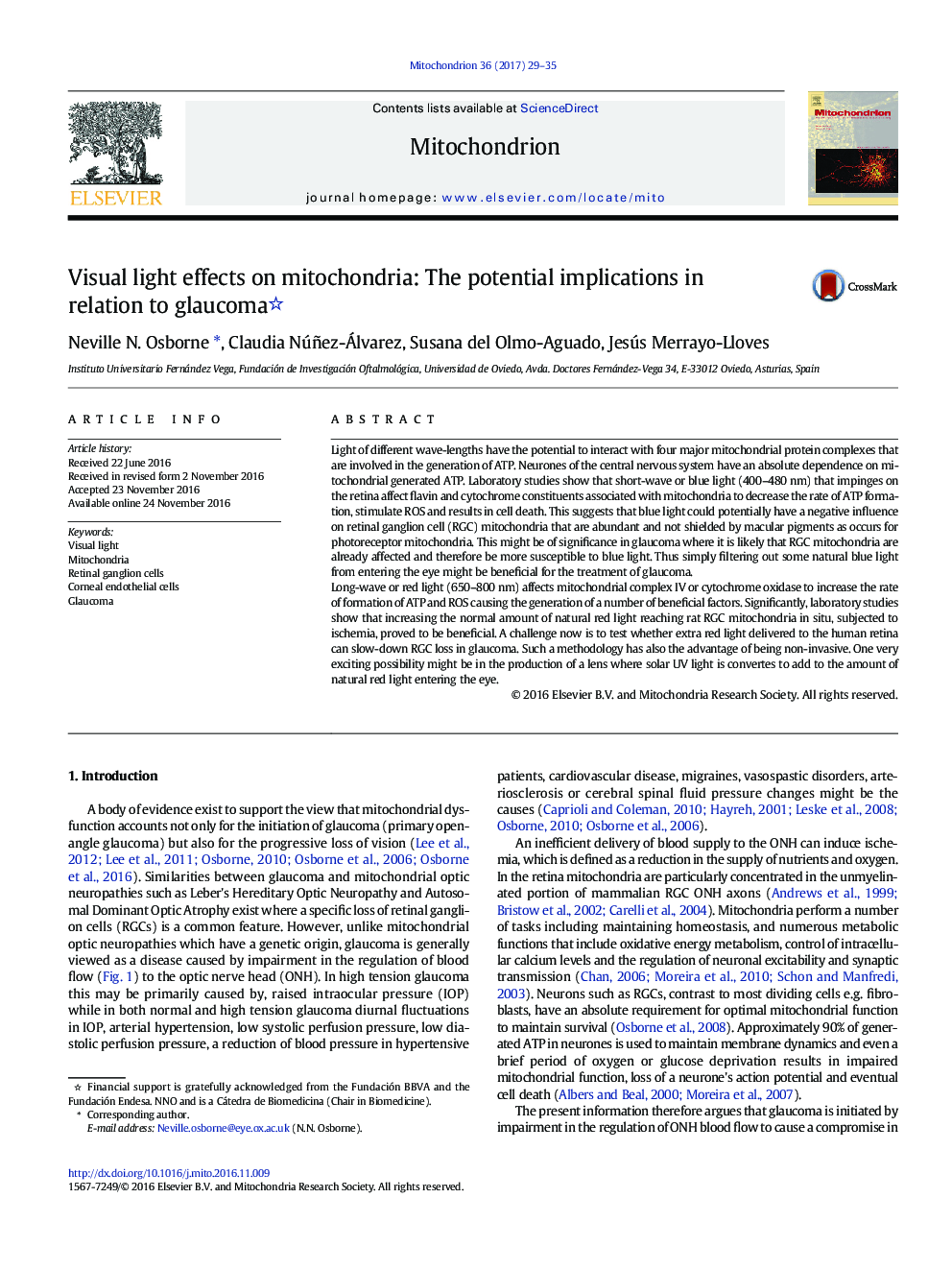| کد مقاله | کد نشریه | سال انتشار | مقاله انگلیسی | نسخه تمام متن |
|---|---|---|---|---|
| 5519635 | 1544408 | 2017 | 7 صفحه PDF | دانلود رایگان |
- Mitochondria are negatively affected by blue light to cause cell death.
- Red light enhances mitochondrial function to benefit cell survival.
- Red and blue light directly impinge on retinal cell mitochondria.
- Specific retinal cell mitochondria initially affected in different diseases.
- Retinal diseases attenuated when blue is decreased and red light is increased.
Light of different wave-lengths have the potential to interact with four major mitochondrial protein complexes that are involved in the generation of ATP. Neurones of the central nervous system have an absolute dependence on mitochondrial generated ATP. Laboratory studies show that short-wave or blue light (400-480Â nm) that impinges on the retina affect flavin and cytochrome constituents associated with mitochondria to decrease the rate of ATP formation, stimulate ROS and results in cell death. This suggests that blue light could potentially have a negative influence on retinal ganglion cell (RGC) mitochondria that are abundant and not shielded by macular pigments as occurs for photoreceptor mitochondria. This might be of significance in glaucoma where it is likely that RGC mitochondria are already affected and therefore be more susceptible to blue light. Thus simply filtering out some natural blue light from entering the eye might be beneficial for the treatment of glaucoma.Long-wave or red light (650-800Â nm) affects mitochondrial complex IV or cytochrome oxidase to increase the rate of formation of ATP and ROS causing the generation of a number of beneficial factors. Significantly, laboratory studies show that increasing the normal amount of natural red light reaching rat RGC mitochondria in situ, subjected to ischemia, proved to be beneficial. A challenge now is to test whether extra red light delivered to the human retina can slow-down RGC loss in glaucoma. Such a methodology has also the advantage of being non-invasive. One very exciting possibility might be in the production of a lens where solar UV light is convertes to add to the amount of natural red light entering the eye.
Journal: Mitochondrion - Volume 36, September 2017, Pages 29-35
